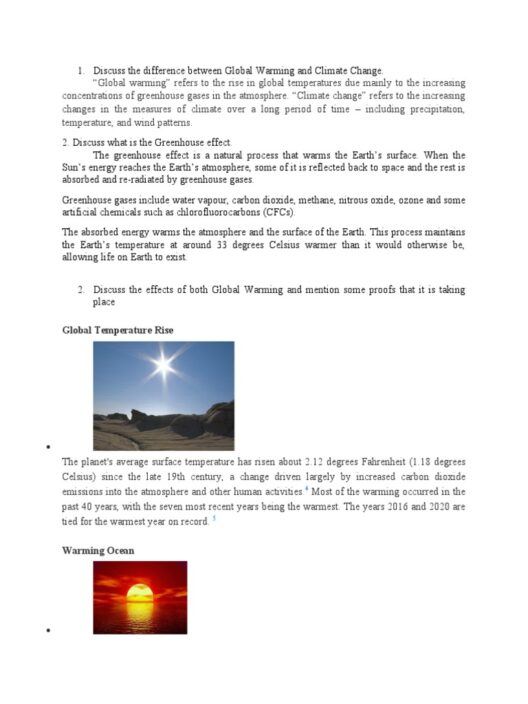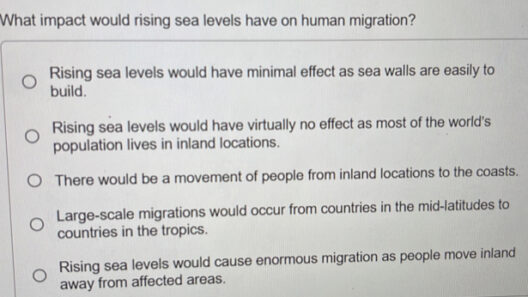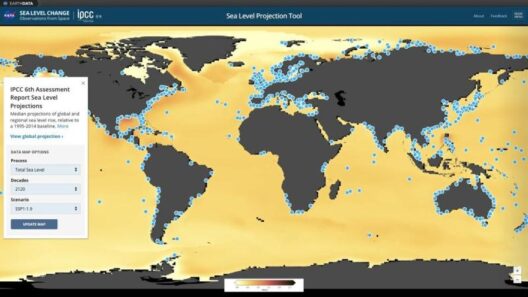Sea level rise is often portrayed as an impending doom that threatens coastal cities and ecosystems. However, the nuances surrounding sea level changes can be quite intricate. This article endeavors to clarify the current state of sea level changes, emphasizing the regional variations, underlying causes, and implications for future generations.
As global temperatures continue to rise, it is critical to delve into the complexities of sea level dynamics and the forces that contribute to these changes.
Understanding Sea Level Rise: The Fundamentals
To effectively grapple with the notion of sea level rise, one must first comprehend what sea level means. Sea level refers to the average height of the ocean’s surface, where it meets the land. It is influenced by various factors including atmospheric pressure, ocean temperatures, ocean currents, and the massive ice sheets of Greenland and Antarctica. While the Earth is often thought of as a water planet, the oceans are not static; they are in constant flux due to both natural and anthropogenic factors.
Global vs. Local Perspectives
At the global scale, data indicates a discernible trend of rising sea levels. Since the late 19th century, global sea levels have risen by approximately 8 inches (about 20 centimeters). This query, however, gives rise to a crucial distinction: global average sea levels versus local sea levels. Local variations can often tell strikingly different stories. For instance, certain coastal regions may experience a rise of over a foot, while others may see negligible changes or even drops in sea levels due to land uplift or subsidence.
Understanding the dynamics of localized sea level changes requires a multifaceted approach. Factors such as ocean currents, temperature differences, and tectonic activity can exacerbate or mitigate rising waters. Furthermore, phenomena like El Niño and La Niña can introduce short-term fluctuations, leading to variations that may mask underlying trends of sea-level inevitability.
Why Sea Levels Are Rising: The Science Behind the Numbers
The principal drivers of rising sea levels can be distilled into two primary mechanisms: thermal expansion and melting ice.
Thermal Expansion
As the global climate warms, oceans absorb heat, leading to thermal expansion. When water warms, it occupies more space. This process contributes significantly to rising sea levels—estimates suggest that thermal expansion accounts for about half of the total observed increase. The absorption of excess heat from greenhouse gas emissions corroborates this phenomenon, propelling the pressing imperative for immediate action against climate change.
Melting Ice
On the other hand, the melting of glaciers and ice sheets has become increasingly problematic. The Greenland and Antarctic ice sheets, massive reservoirs of frozen water, are demonstrating alarming rates of melting, which directly contribute to increasing sea levels. In Greenland, the loss of ice has accelerated in recent years, driven by warmer temperatures. This region alone is estimated to contribute around 0.5 inches (1.4 centimeters) to global sea level rise annually. The Antarctic Peninsula is similarly witnessing unprecedented ice melt, exacerbated by ocean warming and changing current patterns.
The Implications of Rising Sea Levels
The ramifications of rising sea levels extend beyond the visible encroachment of coastal waters. Coastal erosion, increased flooding, and saltwater intrusion into freshwater aquifers pose significant threats to habitats, agriculture, and communities.
Urban Areas at Risk
Coastal urban centers like Miami, New Orleans, and Jakarta are facing existential challenges as they grapple with the reality of rising waters. The potential for increased flooding jeopardizes not only life and property but also economic stability. Infrastructure, originally designed to withstand specific environmental conditions, may now require vast investments for retrofitting and maintenance to remain resilient in the face of environmental shifts.
Natural Habitats and Biodiversity
Ecologically, rising sea levels can precipitate the loss of valuable ecosystems such as mangroves, salt marshes, and coral reefs. These environments serve as crucial buffers against storm surges and provide habitat for countless species. As these protective barriers erode, the health of marine and coastal biodiversity hangs in the balance.
Scientific Consensus: The Path Forward
Climate scientists agree that immediate and substantial action is necessary to mitigate the worst effects of climate change, which includes the ongoing rise in sea levels. Adaptation strategies and policies must be prioritized. This encompasses the implementation of more resilient infrastructure and the restoration of coastal ecosystems, alongside reducing carbon emissions to curb global warming.
Concluding Thoughts: An Environmental Call to Action
The dialogue surrounding sea levels is not merely one of rising or falling; it is an intricate narrative woven from scientific analysis and human experience. As the evidence mounts, it becomes evident that global sea levels are unequivocally rising, bringing with them a host of social, economic, and environmental ramifications. Addressing this crisis necessitates concerted efforts at local, national, and international levels. Awareness, advocacy, and actionable change are imperative for safeguarding our planet’s future.
By fostering a collective sense of responsibility, we can initiate the necessary dialogue to influence pivotal policy changes that holistically address the challenges posed by rising sea levels. The time to act is now; failure to do so could lead to a reality where communities are irrevocably altered and invaluable ecosystems are lost forever.








